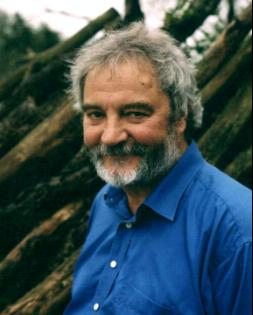The Perfect Specicide System For Bees (brought to you by Bayer©)
According to this study , the bee deaths are connected to neonicotinoid class of pesticides, which use a synthetic derivative of nicotine. These chemicals are applied as a glaze to corn and soybean seeds prior to planting. They are then absorbed by the plant’s vascular system and the appear in pollen and nectar. Factory farms have planted MILLIONS of acres of farmland with neonicotinoid treated seeds since 2003, and this is not the first time danger has been shown. On July 23, 2010, Dutch toxicologist, Dr Henk Tennekes had a scientific paper published in the journal, Toxicology (online) titled, “Druckrey-Küpfmüller Equation For Risk Assessment” He then authored and published a book in regards to his research called “A Disaster in the Making”. The book explores the impact of neonicotinoids on the immune system of bees.
The newer Purdue study shows that Bayer’s products are far more poisonous to bees than the company wants the Government and people to think. The researchers found that “maize pollen was frequently collected by foraging honey bees while it was available: maize pollen comprised over 50% of the pollen collected by bees, by volume, in 10 of 20 samples.”
Bayer denies its pesticide has contributed to bee die-offs. (Bayer also continued to sell contaminated blood plasma causing thousands of hemophiliac patients to be infected with AIDS, as reported in the NY Times 22 May 2003, but thats another story of this evil and old company). The company says that bees do not seek corn and therefore only trace amounts of neonicotinoid containing pollen will return to hives. And to date, the EPA has propped up Bayer’s claims.
There are also some unanticipated means by which bees are exposed to the pesticides, largely caused by hefty sized commercial “factory farmers”. The highly automated world of automatic monoculture uses giant mechanical seed planters. The seeders need a powder applied to prevent the polymers used to bond the chemicals to the seeds from clogging up seed coating machine and the seed planters. This powder, along with small amount of pesticides collect in and on the seed bins. As the tractor does its rounds these bins shed a powdery waste of pure poison. This waste is dangerous to bees. The powder can contain up to 700,000 times the bee’s lethal dosage of neonicotinoid, and so of course any bees that come into make contact with it are killed. These initial population losses begin to weaken the hives.
As the pesticide cloud comes to rest on plants in close proximity to the fields and into the soil and water, there is lasting danger to bees as the pesticides are persistent in the foodchain. An dif these chemicals hurt bees, you can be sure humans, plants and other animals in the area are at risk. Any flowers or even your own home garden near treated crop fields can harbor the poison. Bees gather nectar and pollen from the flowers and other plants and will bring the neonicotinoids back to the hive. Although these small levels of the pesticide do not kill the bees, their immune systems become compromised, leaving hives vulnerable to other pressures. Also, newly developing larvae are affected by exposure to pesticides through the stored pollen, bees only source of protein. The cascading effects of these small but continuous doses can potentially devastate an entire hive. Scientists found neonicotinoid pesticides in every sample of dead and dying bees as well as in pollen the bees collected and brought back to the hives, not only in this study, but in several studies now.
The Human Hive Mind
US regulatory agencies follow a policy of relying on manufacturer funded and provided data to conclude the safety of pesticides and herbicides. Although a leaked document in 2010 revealed that EPA scientists found Bayer’s research on its neonic pesticides to be suspect, the agency has not acted to stop the sale or use of these products.
Bayer has profited over one billion dollars from its two neonic products imidacloprid and clothianidin. Given Bayer’s immense wealth and power, it seems unlikely the EPA will take action, particularly in a presidential election year. This means Colony Collapse Disorder is likely to continue to devastate bee populations, leaving reverberating effects on the environment for generations to come. Honeybees are responsible for 80 per cent of all pollination as they collect nectar for the hive, t The mortality rate is the highest in living memory
This type of insecticide was banned in France, Slovenia and Germany after this step the bee populations began to rise again.
Tell the EPA and the US President to take action BAN neonic products like imidacloprid and clothianidin.
Sources:
http://motherjones.com/tom-philpott/2012/01/purdue-study-implicates-bayer-insecticide-bee-die-offs
http://www.purdue.edu/newsroom/research/2012/120111KrupkeBees.html
http://www.panna.org/blog/banner-week-bee-science-zombie-flies-poisonous-planter-exhaust




































